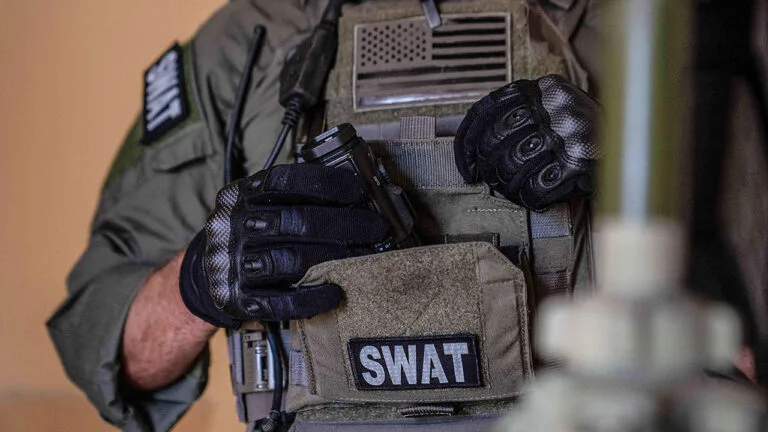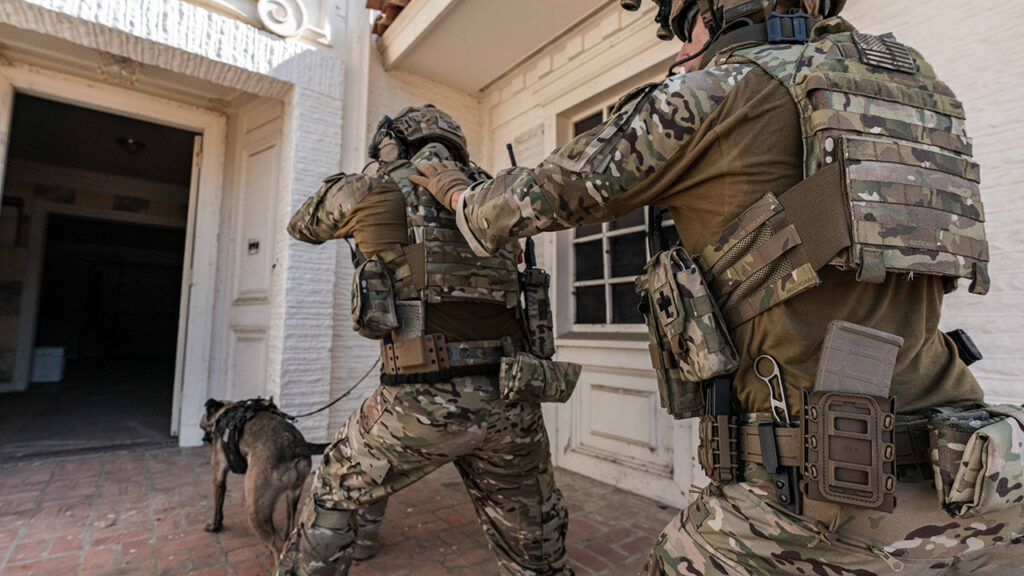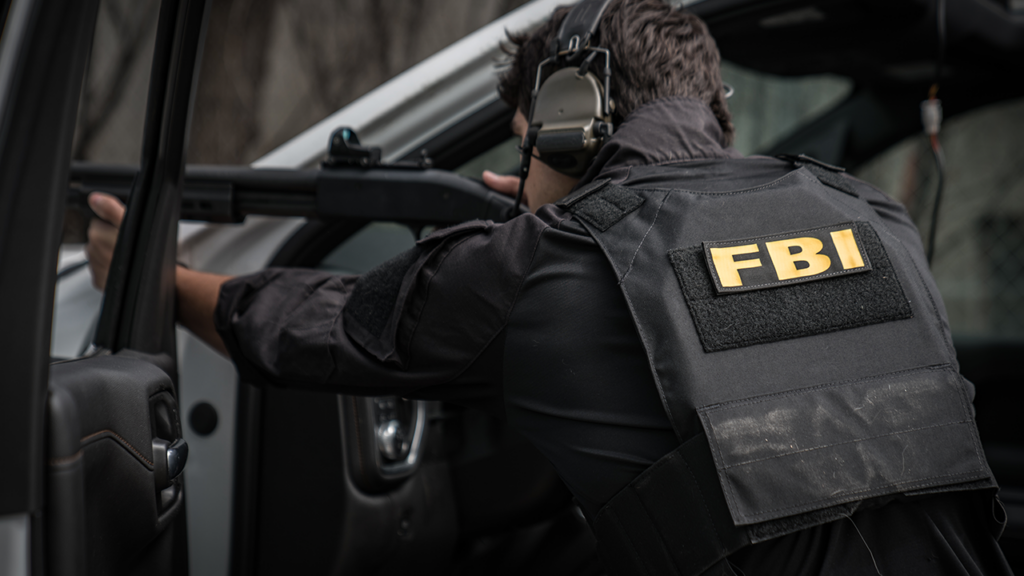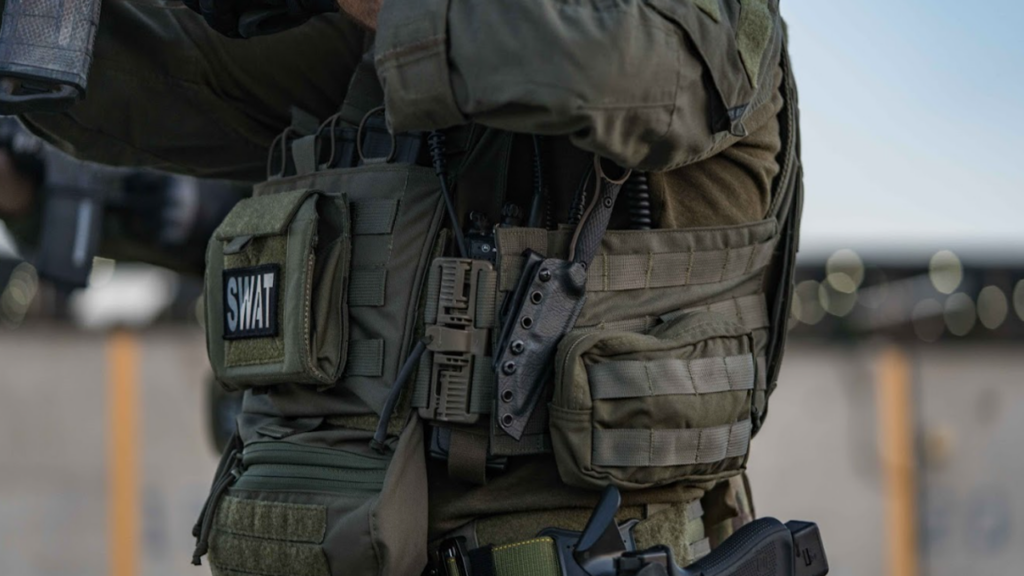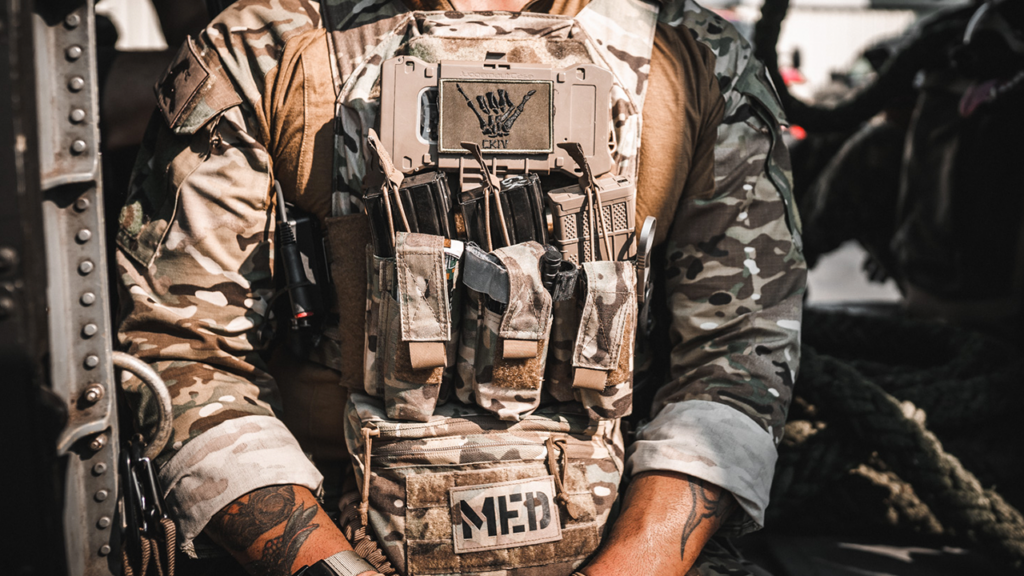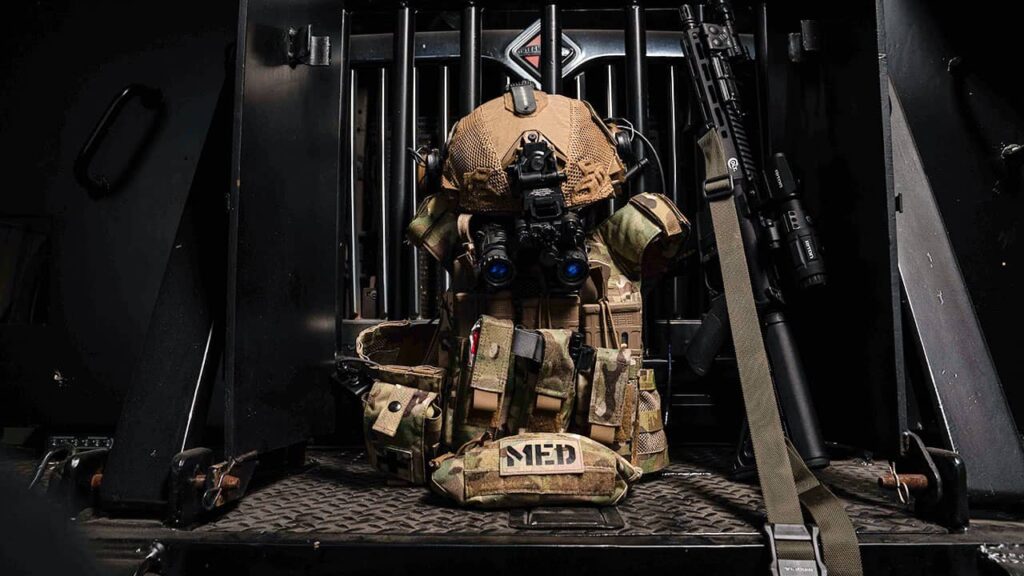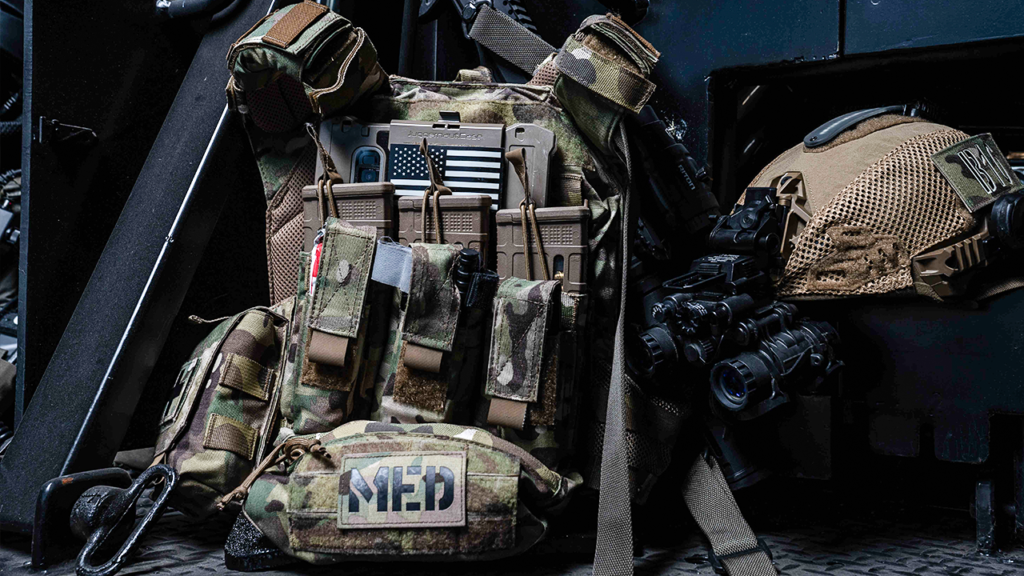The Importance of Wearing Tactical Body Armor
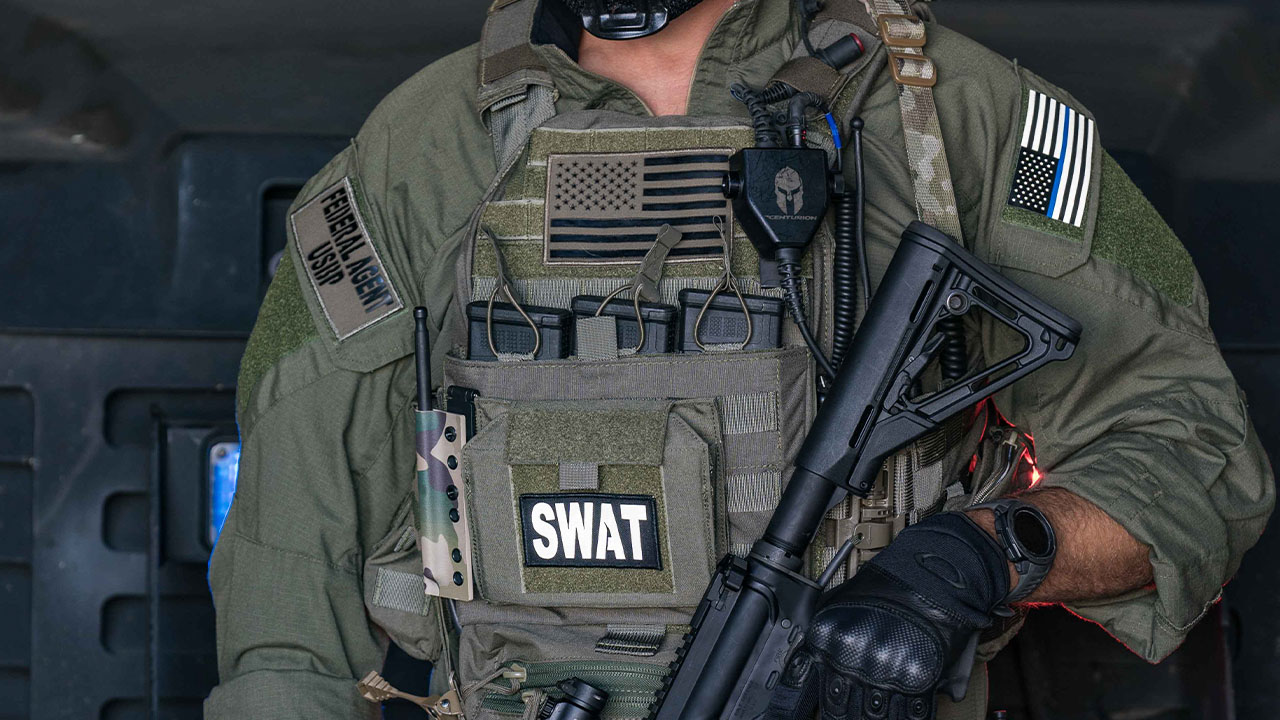
Table of Contents
As former SOF and police officers, we understand the importance of having the proper gear for the job. One of the most essential pieces of equipment for anyone in law enforcement and the military is tactical body armor.
In this article, we will discuss the history of tactical body armor, the different types and materials used, the levels of ballistic protection, the benefits for law enforcement and military personnel, how to choose the right armor, maintenance and care, and the future of tactical body armor.
The Importance of Tactical Body Armor
Tactical body armor is essential for law enforcement and military personnel because it can mean the difference between life and death. It is designed to protect against bullets, shrapnel, and other ballistic threats that officers and soldiers may encounter in the line of duty. Without proper body armor, these individuals are at a higher risk of sustaining life-threatening injuries.
In addition to providing protection, tactical body armor can also give officers and soldiers the confidence they need to perform their duties effectively. Knowing that they are protected can help them focus on their job and make decisions without fear of injury.
The History of Tactical Body Armor
The idea of body armor dates back to the 16th century when the Japanese samurai wore heavy, layered armor made of metal plates. In the 1800s, body armor made of silk and other materials was used by police in the United States. However, it wasn’t until the 1970s that modern tactical body armor was developed.
The first modern body armor was made of Kevlar, a synthetic fiber that is five times stronger than steel. It was initially used by the military and later adopted by law enforcement. Since then, body armor has continued to evolve, with new materials and designs being developed to improve protection and comfort.
Types of Tactical Body Armor
There are two main types of tactical body armor: soft armor and hard armor. Soft armor is made of flexible materials like Kevlar and can be worn under clothing. Hard armor is made of rigid materials like ceramic or metal and is worn on the outside of clothing.
Soft armor is designed to protect against handguns and other small arms fire, while hard armor is designed to protect against high-powered rifles and armor-piercing rounds. Both types of armor come in different levels of protection, which we will discuss in the next section.
Materials Used in Tactical Body Armor
As mentioned earlier, Kevlar is one of the most common materials used in soft body armor. Other materials include Dyneema and Twaron. Each material has its own strengths and weaknesses, and manufacturers may use a combination of materials to achieve the desired level of protection.
Hard armor can be made of Ceramic, Steel or Polyethylene (UHMWPE). Polyethylene ballistic plates are more expensive due to their extremely light weight. Ceramic/Polyethylene ballistic plates are heavier and come with a cheaper price. Steel plates can be the most economical plates and can sometimes weigh less than ceramic ballistic plates.
Body Armor Levels of Ballistic Protection
Body armor is rated by the National Institute of Justice (NIJ) based on its ability to stop different types of ammunition. There are 3 levels of protection, with Level II being the lowest and Level IV being the highest.
Level II armor is extremely lightweight and designed to stop 9 mm and 44 Magnum rounds. Level IIIA and Level III are different options. Level III is made up of hard materials while Level IIIA is primarily made of soft materials. Level IIIA can stop small arms munitions such as 9 mm and 44 Magnum rounds.
Benefits of Tactical Body Armor for Law Enforcement and Military Personnel
The benefits of tactical body armor for law enforcement and military personnel are numerous. First and foremost, it provides protection against ballistic threats that officers and soldiers may encounter in the line of duty. This protection can mean the difference between life and death.
Tactical Advantage and Psychological Resilience
Wearing body armor protects military personnel and boosts their mental strength. Soldiers are less anxious since their protective gear is powerful enough to repel most attacks. Reduced anxiety allows them to focus more on combat requirements and tasks. Mental confidence helps make quicker and more decisive decisions to show improved performance with reduced anxiety over personal safety. Body armor allows soldiers to acquire the mental and physical strength necessary for different combat situations.
Lightweight and Comfortable
Advanced developments in material science and design have led to the formation of lightweight, breathable armors that make physical warfare less burdensome for soldiers in prolonged missions. The bullet-proof vest is a body armor product mainly manufactured to provide essential defense against projectiles—rifle rounds, handgun rounds, and fragmentation—for military personnel. Modern fibers and multi-layered aramid armor will let soldiers endure harsh climates, rough terrain, and hostile conditions without much fatigue. This military armor innovation enhances its strength and can endure such large dimensions of fighting situations.
Crush Injury Resistance by Deflection
For military purposes, body armor provides critical deflection capability in crush injuries from hand-to-hand combat falls and vehicle accidents. Reinforced areas spread the blunt force impacts around them, preventing or lessening the possibility of internal injuries. Modular components like shoulder pads and throat guards offer additional coverage in those critical areas to make impact even more difficult.
Multipurpose, Rugged, and Durable
The body armor produced currently is modular. Hence, a soldier can mold the armor according to each specific mission needs. Sometimes, he may place more components or withdraw several to achieve just the right balance between the amount of protection and mobility. Such resiliently adaptive design survives rugged military tests of durability and performs well in the long term and harsh conditions. Such materials of long duration for long-duration missions and the reliability of protection profiles help cut the cost of technology for forces in terms of reduced replacement charges and maximum preparedness toward the battle.
How to Choose the Right Tactical Body Armor
Choosing the right tactical body armor is essential for ensuring maximum protection and comfort. When choosing body armor, there are several factors to consider, including the type and level of protection, the materials used, and the fit and comfort of the armor.
It is important to choose body armor that is rated for the specific threat levels that officers or soldiers may encounter in their line of duty. It is also important to choose armor that fits properly and is comfortable to wear for extended periods of time.
Maintenance and Care of Tactical Body Armor
Proper maintenance and care of tactical body armor is essential for ensuring maximum protection and longevity. Soft armor can be washed with mild soap and water and should be hung to dry. Hard armor should be wiped down with a damp cloth and stored in a cool, dry place.
It is important to inspect body armor regularly for signs of wear or damage. If any damage is found, the armor should be replaced immediately. It is also important to follow the manufacturer’s instructions for care and maintenance.
The Future of Tactical Body Armor
The future of tactical body armor looks promising, with new materials and designs being developed to improve protection, comfort, and mobility. One area of focus is developing body armor that is more flexible and comfortable to wear while still providing maximum protection.
Another area of focus is developing body armor that can provide protection against multiple threats, including knives, blunt force trauma, and even chemical and biological agents.
The Necessity of Tactical Body Armor
In conclusion, tactical body armor is essential for law enforcement and military personnel. It provides protection against ballistic threats that officers and soldiers may encounter in the line of duty and can give them the confidence they need to perform their duties effectively.
When choosing body armor, it is important to consider the type and level of protection, the materials used, and the fit and comfort of the armor. Proper maintenance and care of body armor is also essential for ensuring maximum protection and longevity.
As the future of tactical body armor continues to evolve, we can expect to see new materials and designs that improve protection, comfort, and mobility. But one thing is certain: tactical body armor will remain a necessary piece of equipment for law enforcement and military personnel.
Conclusion
Military body armor is one of those products that delivers both safety and comfort, but most importantly, versatility, which are all elements in high-stakes situations. For example, a military body armor general protects from various weapons and threats while permitting military personnel to try different combat scenes until they return safely. Generally, manufacturing body armor strengthens both physical and psychological resistance for the military.
Frequently Asked Questions
What types of threats does military body armor protect against?
Military body armor protects against many types of ballistic threats. These include rifle rounds, handgun rounds, and blunt force trauma from close combat. Some vests are designed to provide resistance against shrapnel and other forms of fragmentation.
How is body armor made to allow a person to perform well?
Armor products are engineered to ensure that the users are stress-free and at ease, so they do not have to worry about anything else but their missions. With fewer mental distractions and better physical protection, soldiers can make faster decisions and engage effectively with needed intensity.
What are some of the key features of modern military body armor?
Military body armor is designed as a module and composed of aramid fiber layers, the inserts of which can easily be removed. This kind of armor has enough space to add mission-oriented pockets in case of necessary use. For example, such high durability ratings show balance through impact resistance while allowing for flexible use to remain prolonged cost-effectively in extreme conditions.

